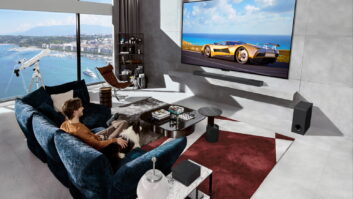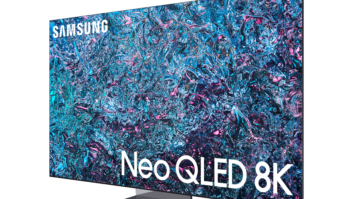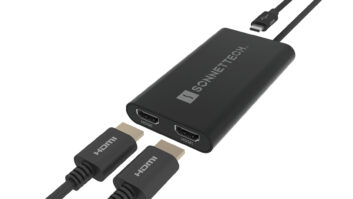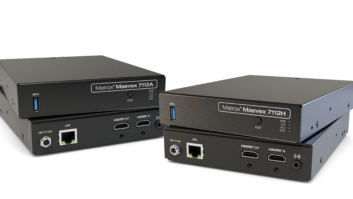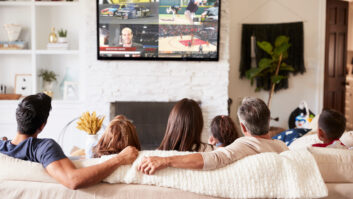
Netflix and Samsung demonstrated delivery of streaming 4K content, and LG showed how 4K could be transmitted over the air using a system developed in Korea, but don’t expect to see it available anytime soon. For now, 4K content is a missing ingredient.

You literally couldn’t miss the 110-inch 4K LED- illuminated LCD screens. And everywhere you turned at the International Consumer Electronics Show this past January there were proclamations about the largest this or the highest that. But when all the hype in the popular press died down, it was clear that neither screen size nor resolution was the real story. One of the major video display stories out of this year’s CES was that China-based manufacturers and marketing brands are now the real deal in the category.
It wasn’t all that long ago that big Japan- based consumer electronics companies owned the display category, with some U.S. players still in the game. That all changed a few years later as Korean companies Samsung and LG became video technology leaders. Now it’s the China- and Taiwan-based brands whose technology and market positioning cannot be ignored.
Is it time to add TCL, Hisense, Skyworth, Haier, or Westinghouse to your product mix? You be the judge. TCL is even stepping up its U.S. marketing presence with the purchase of the naming rights to the Chinese Theater in Hollywood. Yes, a real Chinese company has its name on a faux Chinese theater in the same complex as the recently renamed Dolby Theater where the Academy Award show takes place.
Demonstrating their technical prowess, virtually all of the China-based video brands had 110-inch sets in the 4K (or “UHD”) category, as did Samsung. More realistically, as UHD/4K models come to market in volume this spring and summer, the first UHD/4K models will be 55 inches, 65 inches, and 84 inches, though some brands showed 58-inch models, Sharp showed 70- and 80-inch models, and Vizio previewed a 70-inch set. This is an indication that only a few fabricators are making the UHD panels that marketing brands purchase and build into the completed sets you procure to hang on your clients’ walls. You have to look very closely at the sets to see how one is different from the other. With the panels being the same, it will be the video processing that makes the difference. After all, with a paucity of true 4K content and still fewer ways to deliver it, the quality of a display’s upscaling is the key.
Each of the brands performs upscaling differently using different semiconductors, different processing techniques, and of course, they brand them differently. As an example, Toshiba was touting its CEVO engine, derived from the technology developed originally for PS3. Sony boasted its “4K X-Reality PRO” picture engine. Sharp offered its “Integrated Cognition Creation Technology” and the fact that it has the only THX-Certified 4K sets. LG pointed to its “Triple XD Engine.” Each brand will trumpet its own technologies, but you’ll have to do some serious investigating and close viewing to determine which of the UHD models has the best image to your eyes.

Toshiba promoted its “CEVO” technology as the way to differentiate its UHD/4K options from competing models that may use the same underlying LCD panel.
It would be nice to have 4K content so that there wouldn’t be so much pressure on the video processing, but it will be a while before that is a reality. There are some Blu-ray players with 4K upscaling, and as the year moves on expect to see more. Even before CES, Sony had been supplying special 4K playback systems to consumers that purchased its 4K sets. At CES, Sony showed a prototype of a more consumer-available 4K playback product and emphasized that it will offer Blu-ray discs mastered in 4K to ostensibly provide the best possible 1920×1080 input to the upscaling in the 4K display, Samsung demonstrated 4K streaming delivery in conjunction with Netflix, and LG showed how 4K could be delivered over the air using a system created in conjunction with Korean broadcasters. Since CES there have been hints that some European satellite programmers will dabble in 4K and with rumblings of 4K experiments in Brazil we may even get some events from the next summer Olympics or World Cup in 4K.
The Latest OLED Developments
Last year it was LG and Samsung showing OLED and saying they would deliver sometime during the year. This year it was also LG and Samsung, but now we have real prices and delivery dates attached to some of the OLED products. Panasonic and Sony also showed OLED prototypes.
The images from all of the OLED screens were spectacular. As the technology promises, blacks are truly black, screens were incredibly thin, and images were phenomenally vibrant. All brands share a common technology.
The OLED screens that are closer to market reality are the 55-inch models from Samsung and LG. LG uses white OLEDs and color filters with a passive 3D system, while Samsung takes a different approach with a full, direct RGB panel and active 3D technology. The LG set does have a price and introduction date: “$12,000 in March” while price and availability on the Samsung are still pending. Neither model is 4K, although the prototypes shown by Sony and Panasonic (that may or may not be in the market this year) will be 4K.
One other interesting OLED note was the appearance of prototypes of curved OLED screens in both the Samsung and LG booths. The concept of a curved screen is interesting and the images were OLED perfect. Both however, were prototypes, if not really concept demonstrations, so don’t expect to see either of these available soon.
Short-Throw Front Projection
While consumer rear-screen projection is now officially dead with Mitsubishi taking the category with them when they exited it last year, front projection is still a keystone of our industry. Thus, notably there were two short- throw projectors of interest, both for their technology and configuration.
Proving that they still have a play in the game, Mitsubishi Electric Visual Solutions America is not only reusing the VaserVue name from its late consumer cousin’s high-end line, they are using part of the technology with a 1280 x 768p short-throw hybrid blue laser/LED in March, to be followed by a full 1080P model in late spring/early summer.
LG is also entering the short-throw front projection market with a 100-inch fixed-screen size, 1080p model that is fully laser driven. Clearly designed for consumer applications, it features a wide range of connectivity options from LG’s Smart TV platform, including the “Magic Remote,” WiDi and Wi-Fi, and a built-in ATSC tuner, with the ability to throw a high-brightness, high-contrast 100-inch image at a projector-to-screen distance of only 22 inches. Admittedly, neither is 4K, but for clients looking for a large-sized HD screen at a reasonable price, these models are an alternative.
TCL’s booth at CES showcased its 110-inch UHD display in a prominent position at the front of the main exhibit hall.
The Latest on Glasses-Free 3D

Once a novelty, 3D is now more or less standard on most large-sized displays above the budget-price level. For those who want it and are interested in the cable, satellite, or Blu-ray programming available in 3D, it is there. But for those who look to the possibility of auto-stereoscopic, or “glasses- free” 3D as the savior for 3D programming, the wait will be a bit longer.
There were more than a few demonstrations of auto-stereoscopic 3D by both traditional brands and their suppliers and China-based companies. None, however, offered pricing or availability. More telling, Toshiba, which has been selling a glasses-free TV in Japan and Europe, said that it won’t be bringing that product to the U.S. market in the foreseeable future. Think of this not as a lack of confidence in 3D, but rather simply as an indication that for those who do enjoy 3D content, the use of glasses is perhaps not as big a barrier as imagined.
On a related note, while trends from prior model year lines had most brands sticking somewhat religiously to either active or passive technologies, this year’s CES had some brands formerly in one camp or the other introducing models that were active in some screen size or resolution categories and passive in others. Consider this as further evidence that in-house alliances for LCD panel production are no longer the sole force at some of the “biggies” as they adapt their lines to the realities of the market. As long as the quality meets their standards, it no longer matters if the panel is produced in Japan, Taiwan, or Korea.
With all of this, one can see that there was, indeed, more to the new display technologies and products shown at this year’s CES than was reported in the popular, financial, and enthusiast press. Remember that while there is a huge “wow factor” in having something exclusive and exotic, front-projection systems can deliver larger 4K images screens today and for considerably lower cost. Or, if you really want to do something special for a cost-is-no-object client, Panasonic has a 150- inch 4K plasma TV that might be available by special order very soon.
Based in Los Angeles, Michael Heiss ([email protected]) is a CEDIA Fellow and contributing editor to Residential Systems.


